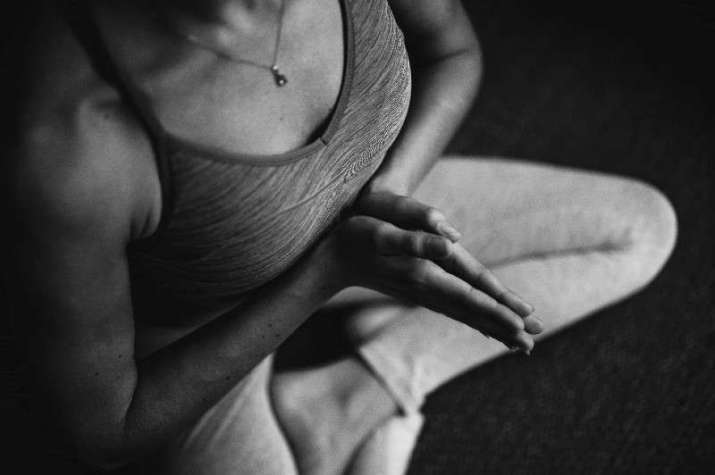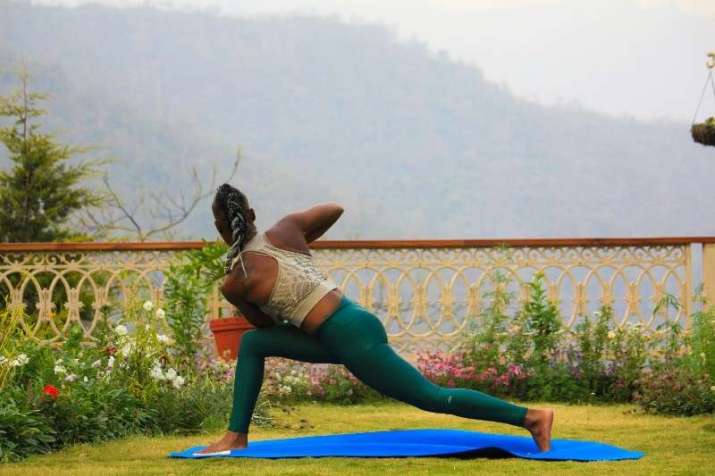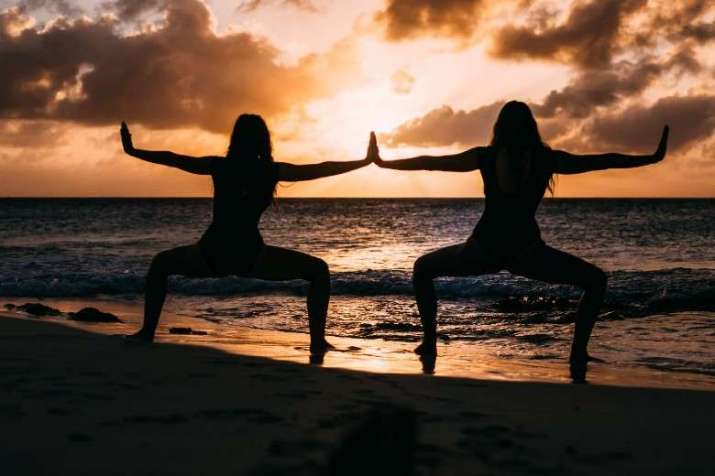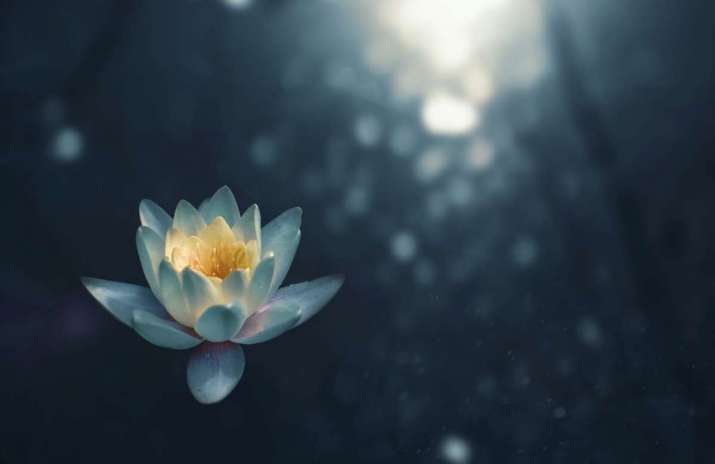This wonderful book is broken into various helpful sections featuring sequences of asanas and visualizations to suit different needs and yogic interests. It includes: postural and movement sequences, hormonal systems, relationships, nature’s relationship to self—including moon phases and seasons—emotional well-being, and daily life; the three times of day (morning, afternoon, and evening) and the fourth, an “intense day.” As Elle explains:
Energy changes according to the time of day. The morning is a dynamic yang phase that peaks around midday and lowers in the afternoon. After that, passive yin takes over until bedtime. Women are influenced by these energy changes in body and spirit. Activities should be adapted to each phase. In order to start the day on the right foot, you should make sure you sleep well. [An intense day means] transport problems, work emergency, a difficult interview, dropping something, forgetting; we've all had a day when nothing goes right. Days like these are part of life. Unfortunately, it is usually those nearest to us who bear the brunt of our anger and frustration. (pp. 217, 226, 230)
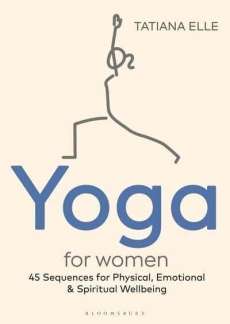 Image courtesy of Green Tree/Bloomsbury Publishing
Image courtesy of Green Tree/Bloomsbury PublishingPoses suggested for each of these four times of day relate directly to the types of energies and activities Elle aims to address or soothe. At its end, this guide includes a “Table of Benefits,” outlining improvements or outcomes that can be expected through engaging in these various postures. In addition, the book covers four concepts or overarching themes: total self-acceptance, understanding one's needs, listening to the body, and respecting one's limits. The three kinds of tools utilized are: setting intentions, asanas (poses), and an explanation of the chakras, which is very well laid out.
This book is based on Elle’s understanding of the sacred feminine. She talks about the journey of discovery of one's own sacred femininity, whether one is male or female or whether or not one was born a woman. She explores principles of feminine and masculine—two sides of the same coin of yin and yang, Earth and sky, Shiva and Shakti, and briefly outlines her own experience with the Nirvana, Ashtanga, and Vinyasa flow styles of yoga. Originally from Russia and latterly France, Elle also studied prenatal yoga. All of these techniques and poses in her book are intended to support all of the cycles of female health through menstruation, perimenopause, menopause, and issues related to body image, libido, self-esteem, stress reduction, and relationships. I was happily surprised to see that this book is so well laid out with small diagrams of each posture and various ways to quickly dive into the material.
Yoga for Women is a workbook resource rather than a book that needs to be read from cover to cover. A reader can dive into any section and find sequences and visualizations that address their present concerns. One section in particular I find very helpful as a foundational tool is on page eight:
Sankalpa, the powerful intention: Sankalpa signifies a ‘wish connected to one’s higher truth.’ It is an intention that takes root in the real desires of your heart, and which calls to a superior strength in order to incite a change in you. At the start of a session, you can pronounce your sankalpa as a wish: a resolution to guide your practice towards making a better version of yourself. This serves the purpose of making a connecting thread for the whole session. In this way, each posture and breath may feed that intention. It is also possible to repeat the son call but at the end of a session to make the most of the mental and physical healing to reinforce the wish. (8)
Although this is something that my own Iyengar teacher did not explain explicitly, we have often returned our intention to a positive thought or visualization for ourselves at the beginning, middle, and end of a session. This can link together the various asanas into a whole healing experience, whether a session lasts for 20, 60, or 90 minutes.
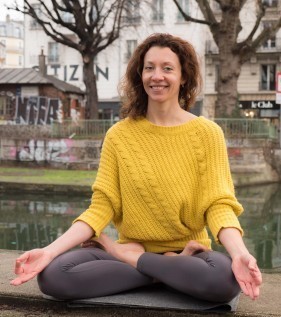
Photo by Tatiana Elle
Elle is passionate about approaches that connect mind, energy, emotions, and body to achieve personal fulfilment. She is trained in the Vinyasa, Nirvana, and Ashtanga styles of yoga, as well as reiki, pranic healing, and acceptance and commitment therapy (ACT).
A yoga teacher and trainer and author of the book Woman's Yoga: 44 Step-by-Step Sessions to Embrace Your Feminine Nature and Find Your Balance (First Editions 2019), Tatiana trained with internationally renowned teachers before creating her own gentle approach based on listening to oneself. She gives weekly classes and organizes Women's Yoga workshops and trainings in France and elsewhere.
When people ask Elle where exactly she is from in Russia, her answer is:
From all over the place. I was born and raised in eastern Russia. When I was 15, we crossed the country to settle in the west, next to the Black Sea. After training in a school of applied arts and achieving a master's degree in linguistics, I fell in love with the Chinese language and moved to Taiwan in 2004. It was there, in 2006, that I discovered the practice of yoga that transformed me and became one of the pillars of my life. From a simple practitioner, I quickly wanted to become a teacher so that I could share the benefits of yoga. (Tatianna Elle)
Elle created her approach, the Yoga of Women, to be a joyful and creative method bringing the modern woman to the depth of herself through myriad methods or entry points. May all people—regardless of gender—find their way back home to the mind-body connection for health, healing, and realization.
Sarah C. Beasley (Sera Kunzang Lhamo), 2019 Nautilus Gold award-winning author of Kindness for all Creatures: Buddhist Advice for Compassionate Animal Care (Shambhala 2019), has been a Nyingma practitioner since 2000. Sarah is a certified teacher and an experienced writer and artist, with an MA in Educational Leadership and a BA in Studio Art. Sarah spent six years in traditional retreat under the guidance of Lama Tharchin Rinpoche and Thinley Norbu Rinpoche. With a lifelong passion for wilderness, she has summited Mount Kenya and Mount Baker, among other peaks. Her book and other works can be seen at www.sarahcbeasley.com.
See more
Tatiana Elle
Related features from Buddhistdoor Global
Tibetan Yoga, the Hidden Treasure of Tibetan Buddhism: An Interview with Ian A. Baker
Demystifying the Yoga of Bliss: An Interview with Dr. Nida Chenagtsang, Part One
Courage and Compassion: Johanne Lauktien and Remedial Yoga for Cancer Patients
More from Creativity and Contemplation by Sarah C. Beasley
